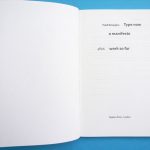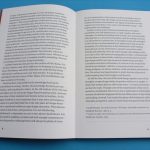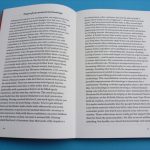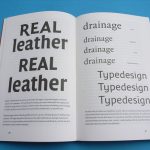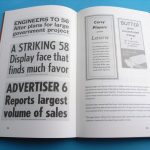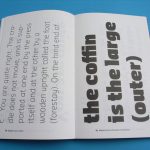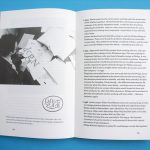A short and strong statement of position by a type designer. The book takes a wide view, taking in the business of present-day font production, and the technics and the ethics of type as software. As always, Smeijers’s arguments are informed by a strong historical sense. The book also shows his own work as a designer, and is published as a conclusion to the award to him of the Gerrit Noordzij Prize.
Contents
Introduction
Type now
Traps of our present technology
The commodity of type
Artisan or designer
Fifteen years of democratic type?
The show goes on
A new moral code?
A code of conduct
Glossary
Fred Smeijers: work so far
Typefaces
In colour
Year by year
Acknowledgements
Synopsis
With the desktop-publishing revolution of the mid-1980s, typography and ‘fonts’ came within anyone’s reach. Since then we have seen a huge boom in the production of new typefaces. This book takes stock of what has been achieved in this period. Smeijers argues for the continuing validity of the traditional skills of drawing and shape-making, for the need to keep on making visual judgements. Meanwhile, the new industry standards, just being introduced, raise the level of the requirements for fonts, and this must limit their production. The essay ends with a proposal for a new ‘moral code’ for type designers.
The book is supplemented with a selection and listing of the author’s own production as a graphic and type designer. It is published in association with the Royal Academy of Art in The Hague, on the occasion of an exhibition there of Fred Smeijers’s work, following the award to him in 2001 of the Gerrit Noordzij Prize.
Reviews
I am greatly reducing the number of viewpoints, but at Reading we are asked to approach type design from a functional perspective: ‘How do you want your typeface to work?’ (Gerry Leonidas), and a design perspective: ‘What do you want your typeface to do?’ (Gerard Unger). Upon meeting Fred Smeijers during a visit to the Plantin-Moretus Museum in Antwerp, Smeijers asked us to approach type design as philosophers: ‘What do you want your typeface to be?’ Upon further readings of ‘Type now’, it is clear that it is this philosophical attitude that underlines much of Smeijers’s book.
David Cabianca, Emigre, no. 67. 2004

